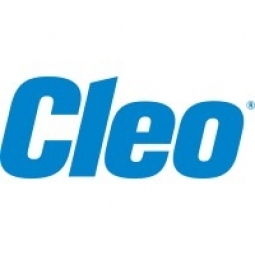公司规模
Large Corporate
地区
- America
国家
- United States
产品
- EXTOL Business Integrator
- EXTOL Business Collaborator
- Home Grown ERP System
- Home Grown WMS System
技术栈
- EDI
- CSV
- XLS
- TXT
实施规模
- Enterprise-wide Deployment
影响指标
- Productivity Improvements
- Cost Savings
- Customer Satisfaction
技术
- 应用基础设施与中间件 - 数据交换与集成
- 应用基础设施与中间件 - 中间件、SDK 和库
适用功能
- 物流运输
- 采购
- 仓库和库存管理
用例
- 供应链可见性(SCV)
- 库存管理
- 需求计划与预测
服务
- 系统集成
- 软件设计与工程服务
关于客户
Mount Vernon Mills, Inc. 是一家多元化的纺织品及相关产品制造商,产品面向服装、工业、机构和商业市场。该公司总部位于南卡罗来纳州莫尔丁,拥有约 3,600 名员工。该公司由七个综合部门组成,在美国经营 14 个生产设施,并为墨西哥、中美洲和加勒比地区的客户提供分销服务。他们的客户包括 Wrangler 和 Lee 等大牌公司。他们的许多供应商都是小型企业和家族企业,提供棉花等原材料或整理服务。
挑战
Mount Vernon Mills (MVM) 是一家多元化的纺织品及相关产品制造商,产品销往各个市场。他们的核心理念是尽一切努力让客户满意,其中包括端到端自动化复杂业务流程和交易数据交换。然而,他们面临着传统 EDI 系统的挑战,该系统在使用和维护软件系统所需的自定义代码方面成本极高。他们还必须处理“转椅集成”,这是一个耗时且容易出错的过程,需要手动将数据从一个应用程序传输到另一个应用程序。
解决方案
MVM 采用了 EXTOL Business Integrator (EBI),这使得其现有团队能够管理非 EDI 格式(例如电子表格、平面文件和 XML)以及标准 EDI 格式的复杂集成。该解决方案使他们能够集成不同的系统,快速响应市场和客户需求,并消除订单到现金周期中的低效率。借助 EBI,来自供应商的 XLS 或 CSV 文件数据会自动与 MVM 的后端系统集成,与传统的 X12 EDI 交易无异。他们还自动化了 9 个非 EDI 贸易伙伴,他们每月与这些伙伴交换大约 215 条消息,这些消息以 CSV、XLS 或 TXT 文件的形式存在,其中包含订单、托运、装运和发票数据。
运营影响
数量效益

Case Study missing?
Start adding your own!
Register with your work email and create a new case study profile for your business.
相关案例.

Case Study
Remote Temperature Monitoring of Perishable Goods Saves Money
RMONI was facing temperature monitoring challenges in a cold chain business. A cold chain must be established and maintained to ensure goods have been properly refrigerated during every step of the process, making temperature monitoring a critical business function. Manual registration practice can be very costly, labor intensive and prone to mistakes.

Case Study
Hospital Inventory Management
The hospital supply chain team is responsible for ensuring that the right medical supplies are readily available to clinicians when and where needed, and to do so in the most efficient manner possible. However, many of the systems and processes in use at the cancer center for supply chain management were not best suited to support these goals. Barcoding technology, a commonly used method for inventory management of medical supplies, is labor intensive, time consuming, does not provide real-time visibility into inventory levels and can be prone to error. Consequently, the lack of accurate and real-time visibility into inventory levels across multiple supply rooms in multiple hospital facilities creates additional inefficiency in the system causing over-ordering, hoarding, and wasted supplies. Other sources of waste and cost were also identified as candidates for improvement. Existing systems and processes did not provide adequate security for high-cost inventory within the hospital, which was another driver of cost. A lack of visibility into expiration dates for supplies resulted in supplies being wasted due to past expiry dates. Storage of supplies was also a key consideration given the location of the cancer center’s facilities in a dense urban setting, where space is always at a premium. In order to address the challenges outlined above, the hospital sought a solution that would provide real-time inventory information with high levels of accuracy, reduce the level of manual effort required and enable data driven decision making to ensure that the right supplies were readily available to clinicians in the right location at the right time.










